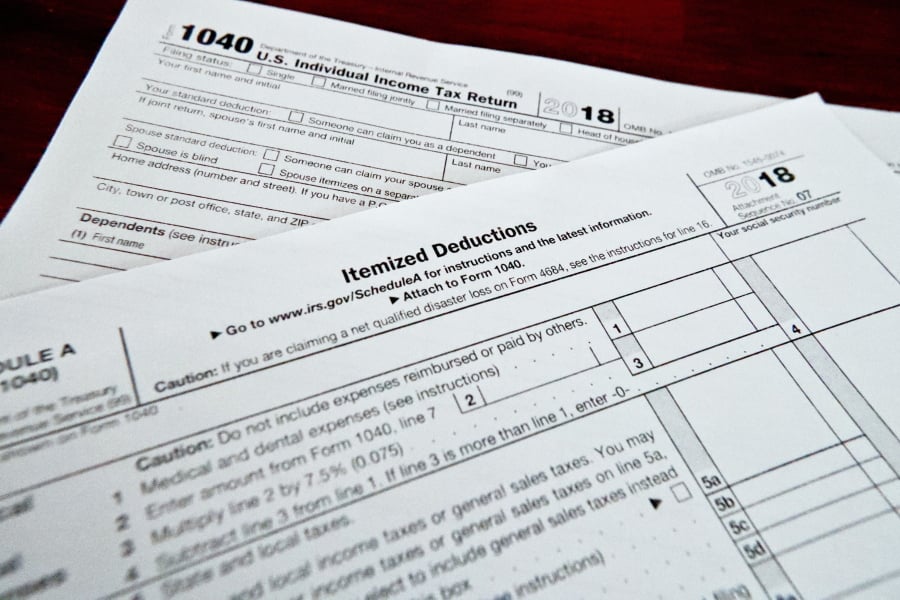Americans will face a slew of new rules during the first tax-filing season with the Tax Cuts and Jobs Act of 2017 in effect.
Here’s what changed for investors:
1. NO DEDUCTION FOR INVESTMENT EXPENSES
For taxpayers who itemize, the 2 percent miscellaneous itemized deduction was a handy catchall bucket for expenses such as investment fees and expenses, and tax-preparation fees. It wasn’t easy to qualify for this deduction — your expenses had to top 2 percent of your adjusted gross income before you could claim them — but it was a nice option to have.
2. LOWER TAX RATES ON SHORT-TERM CAPITAL GAINS
Here’s some good news: The new tax law trimmed income tax rates. That means short-term capital gains — that’s money you make when you sell certain investments that you’ve held for less than a year — now also enjoy a slightly lower rate.
3. 20 PERCENT PASS-THROUGH INCOME DEDUCTION
If you’re a real estate investor — say, you purchase houses and rent them out, or some other such activity — there’s a chance the new 20 percent deduction on pass-through income will apply to you.
The rules are complex, but generally, to qualify for this deduction as a real estate investor, the IRS wants you to be operating a business. The IRS has announced some “safe harbor” rules to help clarify the types of activities that will allow real estate businesses to qualify for the deduction.
For example, you need to maintain separate books and records for this activity, and you or someone you hire must spend at least 250 hours a year managing your rentals, says Mark Luscombe, principal analyst with Wolters Kluwer Tax & Accounting in Riverwoods, Ill.
But even if you don’t meet the safe harbor rules, you still might qualify. As noted, it’s complicated, so hire a tax pro if you think you might be eligible to claim this deduction.
4. NO MORE ROTH RECHARACTERIZATIONS
Before the Tax Cuts and Jobs Act, converting a traditional IRA to a Roth IRA came with an out: By the tax-filing deadline — when you would have to pay income tax on the money you converted — you could reverse, or “recharacterize,” your decision.
In some cases, people were doing this if their investments in the account tanked between the time of the conversion and the tax-filing deadline. But now, no matter the reason, it’s no longer possible.
5. THE KIDDIE TAX IS A LITTLE DIFFERENT NOW
The way children’s unearned income (generally interest, dividends and investment gains) is taxed has changed. Previously, kids paid taxes at their parents’ rate on any unearned income over $2,100. Under the new rules, the rates for estates and trusts apply on unearned income over $2,100.
6. IT’S EASIER TO PAY BACK 401(K) LOANS
Under the old rules, if you lost your job while you had a 401(k) loan outstanding, that loan became due within 60 days — and if you didn’t meet that deadline, you risked owing taxes and a 10 percent penalty.
The new tax rules give you until the tax-filing deadline (up to mid-October if you file an extension) to pay back your loan and avoid the taxes and 10 percent penalty.
7. YOU CAN SEND MORE TO YOUR RETIREMENT ACCOUNT
This has nothing to do with the new tax law and everything to do with the IRS’s annual inflation adjustments: Starting in 2019, you can contribute up to $6,000 ($7,000 if you’re 50 or older) to a traditional IRA or Roth IRA.
And don’t forget that you still have time to save on your 2018 taxes by putting money into a traditional IRA before April 15.



